Wine region
South Moravia
Moravia is a popular, close and even undiscovered region...
Moravia is a popular, close and even undiscovered region. Thanks to the geographic conditions of Moravia, opened from the north and south, unlike Bohemia, closed by a ring of mountains, this region has always been open to various influences from the surrounding area. In the Middle Ages, the famous Amber Route from the Baltic Sea to Rome led here. Roman legionnaires guarded the ancient borders of the Limes Romanes here, and long before that, the ancient mammoth hunters used the comfortable terrain of animal migration routes from north to south. This means only one thing - this region has always attracted people with the richness of life. Maybe that's why the local people are open and friendly. Or maybe they are like that because they are simply cool, cheerful and friendly to themselves and guests. It's worth checking out and seeing for yourself.
It is also worth considering the fact that it was here where the first Slavic writing was created and that the first Slavic Christians built their churches here. The oldest statue in the world made by a Paleolithic man was the Venus of Věstonice on Pavlov Hills, where great wine is produced today. A full-bodied and harmonized wine. Here, on the slopes with many beautiful vineyards, in wine cellars, where the wine matures and the proud winemaker invites his guests to winetasting, the so-called "košt". He takes a wine thief in his hands, pours wine himself and guests, tastes the wine and talks about its features, aromas, what wine needs, compares its characteristics to different personalities of people and their characters, always adding funny anecdotes and jokes. Tastings are a pleasure for body and soul.
Moravia is a picturesque and peaceful region, a land that has experienced a lot and remembers a lot. It is from this wealth that the amazing atmosphere of an authentic vine-growing culture is born. In no other region of the Czech Republic you can find such colorful, vivid folklore, singing, dancing and joy - some of the local folk customs have even been entered on the UNESCO list. Moravians respect traditions and never intended to spread their opinions by force. Here live people who are grateful because their land gives them all the best it has. They are kind because that is their nature. They're right, because after all, that's what life is all about. For Moravians, a smile is more important than any gold in the world. And they share this approach with everyone who wants to enjoy South Moravia.
WHAT IS WORTH SEEING
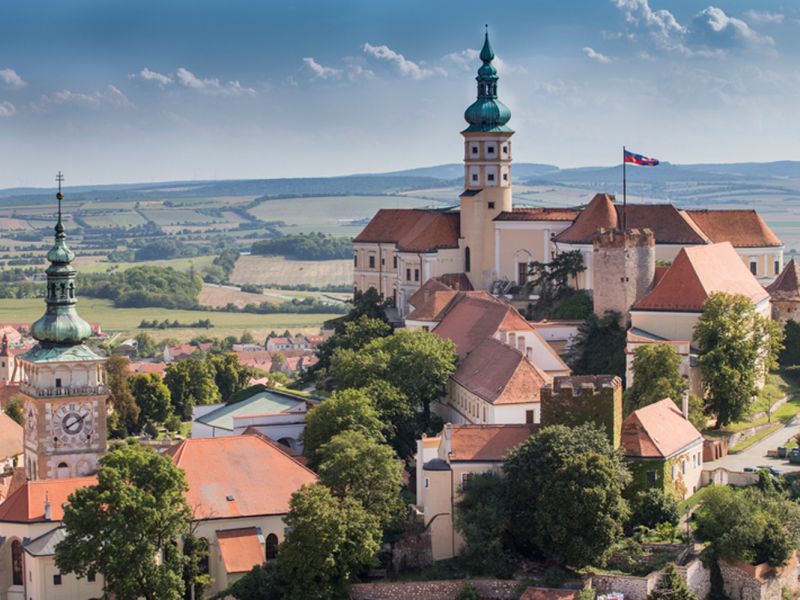

Mikulov
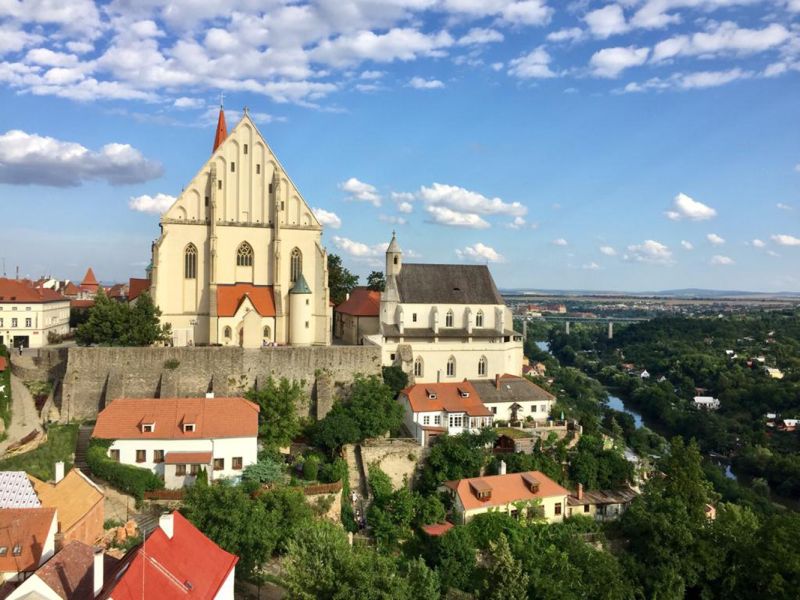

Znojmo
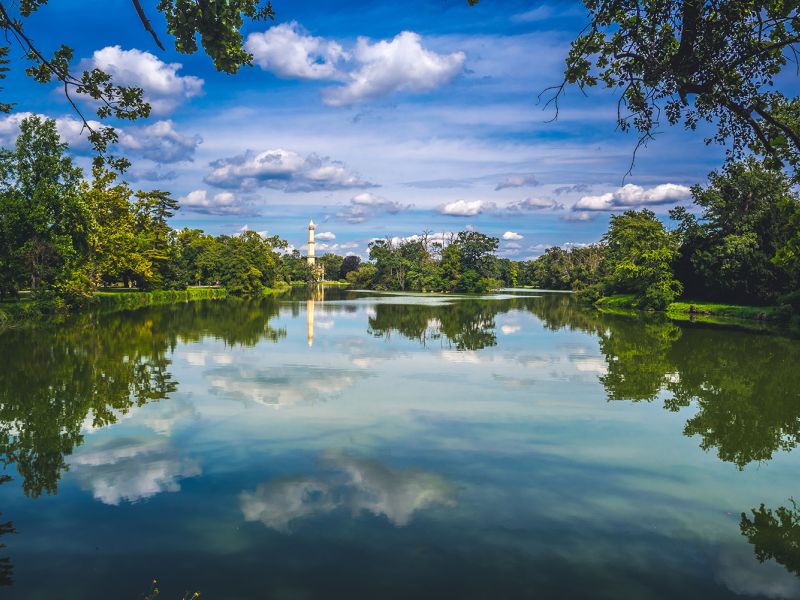

Podyjí National Park
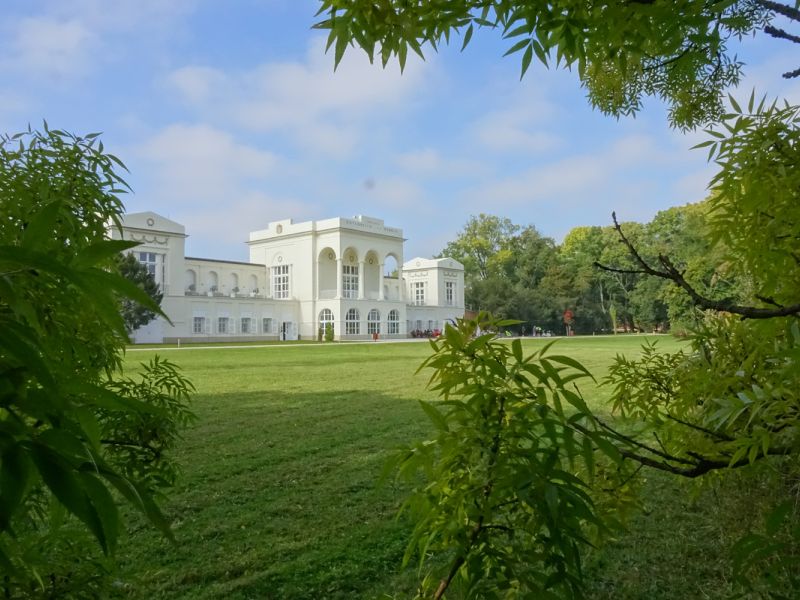

The Lednice-Valtice Palace and Park complex
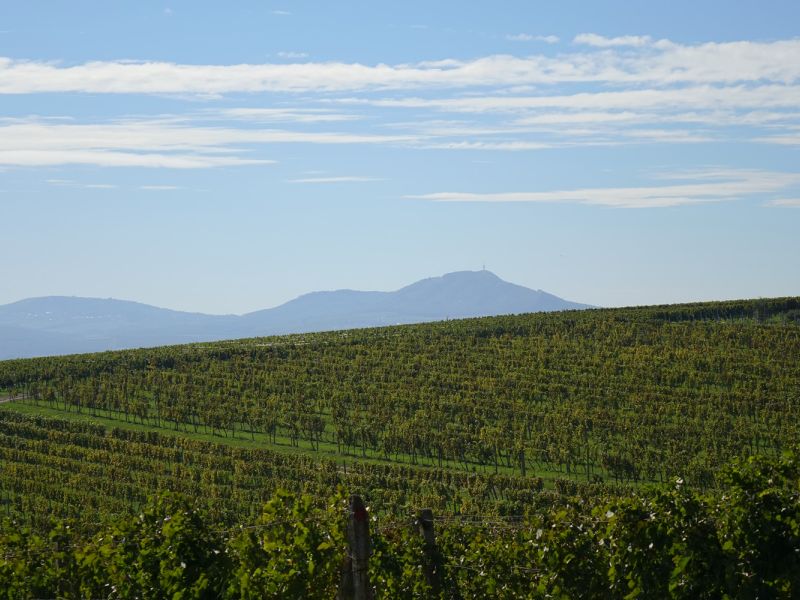

Pálava – a landscape park
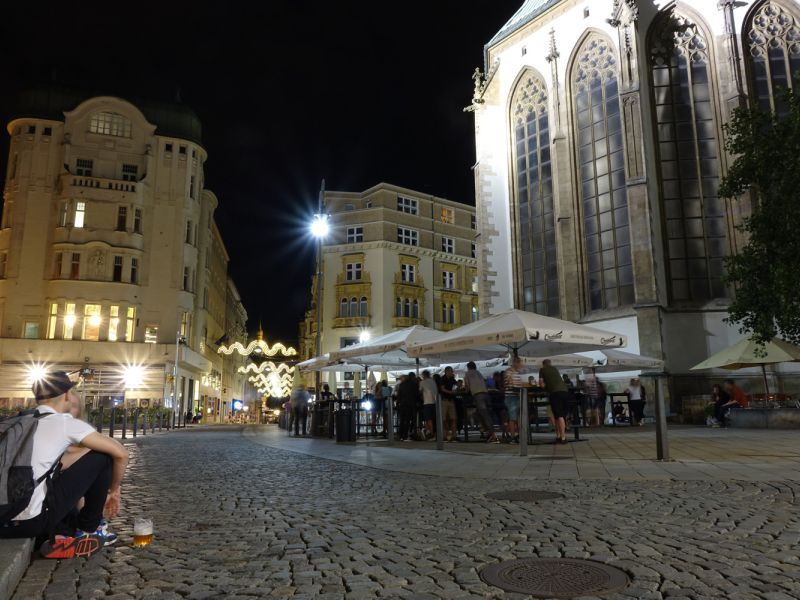

Brno
Villa Tugendhat is on the UNESCO list.
A luxurious villa built in 1928-1929 according to the design of Mies van Der Rohe, an outstanding architect and director of the German Bauhaus. To this day, it amazes with its image, which even after 90 years has not lost anything of the charm of modern and timeless architecture. A unique example of a modernist villa connected by large glass boards with garden exteriors creating the impression of a flat floating in the air.
Old Town
The Old Town Hall, the Gothic church of St. Jacob and the mortuary located nearby, the underground under Zelný trh open to the public.
Zelný trh
The most picturesque square in Brno with a vegetable market run here for over 100 years full of sellers and their customers, where even Leoš Janáček often came to catch inspiration for his operatic compositions. A charming and very lively place with medieval palaces around and a baroque fountain in the middle of the square.
Spilberg
A medieval castle, a prison for nations, where many Poles also served their sentences as a punishment for fighting for the independence of the Republic of Poland. Today it is the seat of the Museum of the City of Brno with many exhibitions and casemates open to the public. From the hill on which the castle stands, there are wonderful views of the entire city and the neighboring areas of South Moravia.
Capuchin Crypt
Thanks to a unique ventilation system, we can still find mummies of bodies of former monks, patrons and famous personalities associated with the history of the city of Brno, such as Baron Trenck.
Blue Mountains
A place near Brno, which is characterized by the typical atmosphere of quiet vine-growing villages with wine streets, colorful cellars and wine trails on the slopes of the rolling countryside in the vicinity of Bořetice, Kobylí, Němčičky, Velké Pavlovice and Vrbice. Nice lookout towers, a windmill, a lazy train through the vineyards and much more. The real greatest example of slow life 3 hours from Katowice. Would you believe?
MORAVIAN WINE REGION
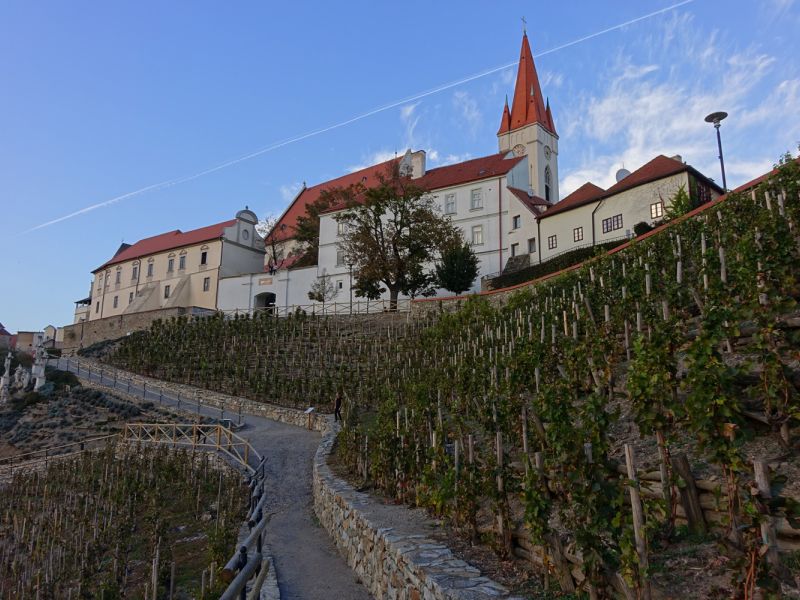

ZNOJMO SUBREGION
91 municipalities, 1,140 producers, 3,156 hectares of vineyards. The historic town of Znojmo, which gave its name to the entire wine-producing subregion, has always been an important center of viticulture, as evidenced by the network of long wine cellars just below its surface. The beautiful silhouette of the city with vineyards, church towers - the oldest is the Rotunda of St. Catherine from the 11th century - and the Znojmo castle on the Dyje River attract enthusiasts not only of history and good wine, but thanks to the nearby Podyjí National Park also lovers of nature and relaxing walks or bike rides . Next to the shrine of St. Nicholas, there is one of the most evocative Moravian vineyards with a tasting stand - Rajska vineyard with a panoramic view of the Dyje River and the nearby Austrian countries. This sub-region offers a wide range of leisure activities and, of all the sub-regions, it focuses the most wine tourism. Wine trails for cyclists and tourist hiking trails, special minibuses to the surrounding vineyards, where wine tasting stands are prepared directly in the vineyards.
Terroir and geography
The Znojmo sub-region is characterized by westerly winds, the rain shadow of the Bohemian-Moravian Highlands and the occasional influx of cooler air. This causes a slowdown in vegetation in favor of highlighting aromatic substances during the ripening of the grapes. In the vicinity of the town of Znojmo, there are first-class vineyard plots with a gravelly base, covered with layers of loess with clay inserts. These vineyards are located in the range from Kraví hora towards Hnanice. From Znojmo southwards along the border with Austria there are many excellent vineyards, through Šatov, Chvalovice, Vrbovec, Hnízdo, Slup, Jaroslavice to Hrušovany nad Jevišovkou, mostly with loess soils with the addition of gravel. To the east, along the Dyje River, there are slopes with vineyards in the vicinity of the municipalities of Tasovice and Hodonice. In the center of the sub-region there are several excellent clusters of vineyards along Unanovka and Jevišovka with well-known wine-growing communities of Těšetice, Lechovice and Borotice. The subregion is mainly known for its white, aromatic wines. White grapes grow here on an area of 2,175 ha. They are mainly Veltlínské zelené, Müller Thurgau, Riesling, Sauvignon, Pinot blanc and Ryzlink vlašský varieties. From strongly aromatic grapes, mainly Traminer, Muškát moravský and Pálava are grown. Red varieties grow on an area of 960 ha, mainly Svatovavřinecké, Frankovka, Pinot Noir.
TOP 5
The Šobes vineyard, located in the meander of the Dyje River, belongs to one of the best European vineyards and its owner, the winery Znovin Znojmo, finances archaeological research with the aim of including the vineyard on the UNESCO list.
Wine museum in the monastery.
Gene Pool of vines of the Czech Republic near the municipality of Vrbovec, which guards 290 local varieties.
Podyjí National Park.
VOC Wine Festival and Znojmo Harvesting Festival.
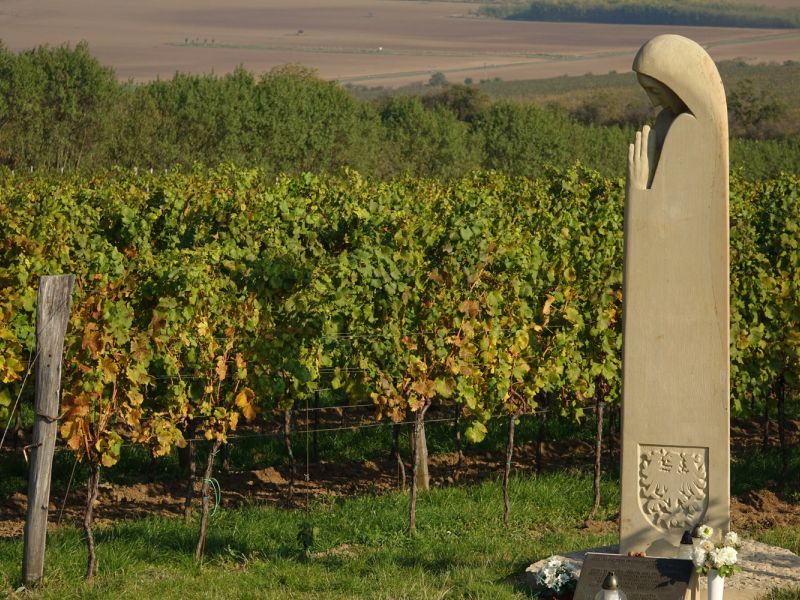

MIKULOV SUBREGION
A characteristic and visible landscape dominant of the Mikulov subregion is the limestone massif of Pálava Hills with the ruins of former medieval castles. For a long time, this area of the country, the silhuette of a mountain ridge rising from the Pannonian plain, resembling the back of some long-ago extinct animal, attracted the public of people. This is the place where Venus of Věstonice was found - the oldest ceramic statue in the world - the most famous artifact of the mammoth hunter culture, which took advantage of the wealth of this country already about 25,000 years ago. When we look at the limestone massif of Pálava, we must also remember the Roman legionaries guarding the limes romanes, who, seeing the slope of these mountains, far from their country, immediately planted the first vineyards above the Danube here. It means that we are at the very beginning of growing vine in Moravia.
Geography and Terroir
30 municipalities, 2,499 producers, 4,454 hectares of vineyards.
The geography of the Mikulov subregion includes the Mikulov Highlands with calcareous soils in the vicinity of Pálava, the Dunajovice Hills and the Valtice Highlands with large deposits of loess and the sandy plain of the Boří forest. The climate here is very warm and dry. White varieties occupy the vast majority of the crops (3,225 ha), and clearly the extremely original Vlašský Ryzlink with its characteristic minerality and excellent quality. It is traditionally followed by Veltlínské zelené. Wines from both varieties have always been used here as the basic raw material for the production of sparkling wines. The Burgundy varieties Pinot blanc and Chardonnay are also very good. Of the red varieties, the most numerous are Svatovavřinecké, Frankovka and Zweigeltrebe. The excellent Veltlínské zelené and other regional varieties such as Müller Thurgau grow on clay soils, and the unique Neuburg and Silvaner in the vicinity of the Valtice. To the north of Pálava, in the vicinity of the wine-growing communes of Strachotín, Pouzdřany and Popice, there are Riesling, Traminer and Pálava. The latter variety is truly at home here, because, like the other Aurelius variety, it was created in the breeding station in Perná.
TOP 5
Mikulov
The natural center of this wine-growing sub-region is the town of Mikulov at the very border of the country, it is only 70 km to Vienna.
The Lednice-Valtice complex
A UNESCO World Heritage Site, is an area of two castles connected by a unique system of gardens, parks, lakes and rivers, which form the largest area of man-made landscape in the world. In Valtice, the capital of wine, there are several wine-growing institutions - the National Wine Center with the Wine Salon of the Czech Republic (tasting exhibitions of the national wine competition - the 100 best wines of last year), the Valtice Wine Academy, the Valtice Secondary Vocational Wine School.
Pálava - landscape park
The last promontory of the steppes of Pannonia, the limestone Alps, set on the edge of the riparian forests of the lower course of the Dyje River.
Archeopark Pavlov
An exposition admonishing the ancient mammoth hunters from whose culture the most famous and oldest statue in the world – Venus of Věstonice - was created.
Aqualand Moravia (Pasohlávky)
A modern water revelry center where you can spend the whole day in thermal water pools, on roller coasters or take advantage of wellness services.
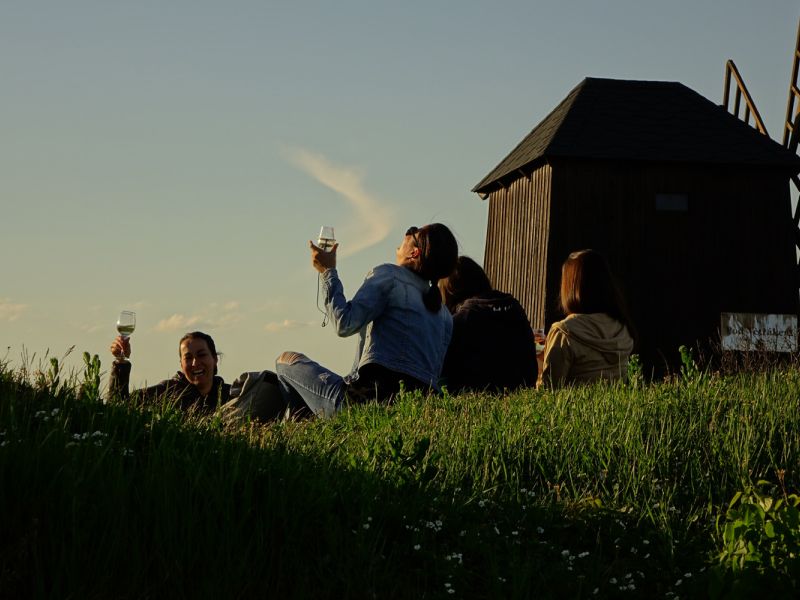

VELKÉ PAVLOVICE SUBREGION
The Velké Pavlovice sub-region is located south of Brno, the capital of Moravia, a city with a rich history and modern dynamism. This wine sub-region is the center of the production of red wine varieties. The red Frankovka and Svatovavřinecké varieties, which best suit the local terroir, ripen in the vicinity of Hustopeče, on the slopes of the undulating country, on magnesium soils. Velké Pavlovice gave the world a variety of red wine - André. The number of blue grapes has resulted in the designation of one section of this region – Modré hory – Blue Mountains (VOC Modré Hory) - which are located in the vicinity of the municipalities of Bořetice, Kobylí, Velké Pavlovice and Vrbice. Here you can find typical streets with wine cellars - i.e. shop streets. The Templar cellars in Čejkovice are very popular alongside tourists who like wine and history.
Geography and terroir
Area 4,741 ha, 75 communes, 7,209 producers, 4,772 ha of vineyards
The Velké Pavlovice wine sub-region, which is located in the Hustopeče-Kyjov hilly area, formed of limestone deposits and loess, is the heart of red wine production in Moravia. The relief of the sub-region is hilly, in places there are higher ridges. Vineyards with red varieties here cover an area of 2,006 hectares, the largest of all Moravian subregions. These are mainly Svatovavřinecké, Frankovka and, apart from Modrý Portugal, Zweigeltrebe and Pinot noir, also André. In the central part of this region we find soils formed by calcareous clays, marls, sandstones and conglomerates. The first row of slopes with vineyards runs along the axis of the Brno-Bratislava highway on the section Velké Němčice - Velké Bílovice and is warmer than the slopes located higher inside the highlands. To the right of this axis, Židlochovice is an important wine-growing community with predominantly loess soils, vineyards spread over richly undulating terrain. Here we will find the best habitats for growing Burgundy varieties. To the left, there are slopes with vine-growing plots in the vicinity of the wine-growing village of Velké Němčice, and the vineyards stretch to the vicinity of the largest wine-growing village - Velké Bílovice and further towards Moravský Žižkov. There are a whole series of first-class wine plots with the highest soil valuation, rising above the plain area as the first elevations of the Chřiby mountain range. The slopes covered with vineyards have a convenient orientation towards the south and south-west, they are blown by warm winds that support the ripening of the grapes. Of the white varieties, mainly Veltlínské zelené, Müller Thurgau, Ryzlink vlašský are cultivated, and in older vineyards the traditional variety - Neuburg. In the northern part, around Hrušovany and Žabčice, the vines are grown on sandy soils, where Veltlínské zelené, Pinot gris, and especially aromatic varieties such as Traminer, Pálava, Muškát moravský and Müller Thurgau thrive well.
Top 5
Brno
Villa Tugendhat included in the UNESCO list, Old Town - Old Town Hall, Zelný trh, Petrov Cathedral and the above – Spilberg – a medieval castle, a prison for nations, where many Poles also served their prison sentences as a punishment for fighting for the independence of the Republic of Poland from the rule of Austria.
Slavkov
Battle of the Three Emperors (Alexander I., František I., Napoleon) - 1805 with a burial mound, victims of the Napoleonic Wars in the village of Práce.
Blue Mountains - a typical atmosphere of quiet wine-growing villages with wine streets, colored cellars and wine trails on the hillsides of the rolling countryside in the vicinity of Bořice, Kobylí, Velké Pavlovice and Vrbice.
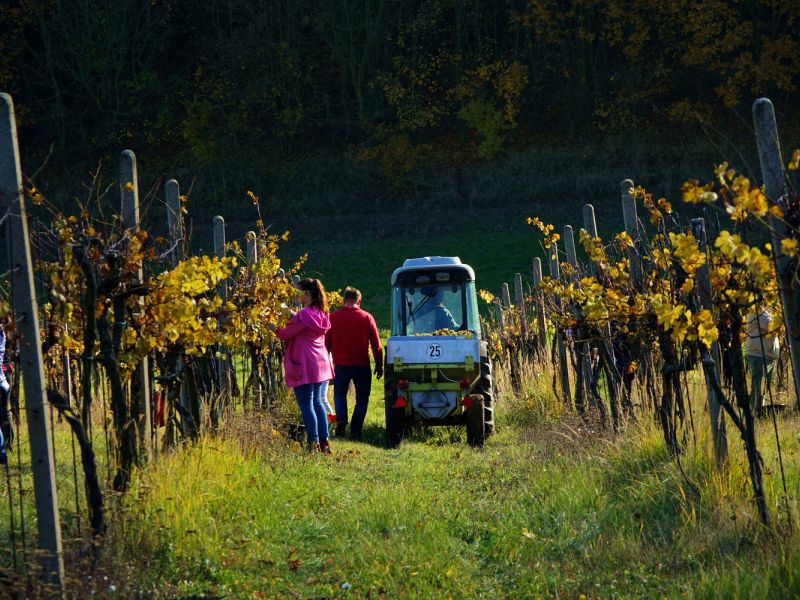

SLOVAK SUBREGION
The Slovak wine subregion is a world for its own. It is so rich in the customs of the original Moravian-Slavic culture that it could easily demand its own state independent of the Czech Republic. The people here are wonderful, open-hearted and free, the local folklore presents a wealth of immeasurable value - The Ride of Kings and Verbuňk (dance of recruits) are even on the UNESCO list. The topography of the Slovak subregion is very diverse – from the lowlands of the Morava and Dyje rivers through the slopes on the border with Slovakia. Just as the terroir is numerous, the wines ripening here are rich in flavors. Varieties such as Müller Thurgau, Riesling, Pint blanc, Veltlínské zelené, Frankovka, Muškát and Cabernet Moravia are produced here. The region boasts many beautiful vineyards and wine cellars.
Geography and terroir
115 municipalities, 8,408 producers, 4,335 hectares of vineyards
In the subregion, two-thirds are cultivated for white wines, and one-third for red wines. The most common is Müller Thurgau and Riesling, then Veltlínské zelené and Pinot blanc, Chardonnay and Ryzlink Vlašský. Aromatic strains are represented by Sauvignon and Muškát moravský. Among the red varieties, Frankovka, Svatovavřinecké, Zweigeltrebe, Modrý Portugal, Pinot Noir, André and Cabernet Moravia are the leaders. The Slovak wine-growing subregion extends in the south-eastern part of Moravia and is characterized by a great variety of natural conditions. The Morava River divides it into two parts. On the right bank of the Moravia, in the north, there are the vineyard slopes of Chřiby with the Ždánice forest in the background. In front, the town of Bzenec, known for its Riesling variety (local name: Lipka). The land on the left bank belongs to the Carpathian province - it forms the foothills of the White Carpathians. Unlike the rest of the Moravian wine-growing sub-regions, vineyards grow on heavy soils, formed from the original claystones, predominate here. A characteristic feature of these soils is their water absorption, thanks to which the vine draws water and nutrients even in dry years. This gives the wines a higher level of extract, the wines are full-bodied in taste. All Burgundy and Silvaner varieties perform best under these conditions. In the Blatnice pod Svatým Antonínkem wine village, an original combination of wines from the Riesling, Pinot blanc and Silvaner varieties was created as the cuvée brand wine Blatnický roháč. Extensive vineyards also stretch in the vicinity of Blatnice in the direction of Lipov. The administrative center of this region has always been the town of Strážnice, which was granted the right to grow and produce wine in 1417 by Petr of Kravaře. Strážnice also has excellent wine plots, especially in the vicinity of the Petrov wine village, where there is a famous location of historic wine cellars called Plže. The southern slopes of the White Carpathians are open to warm south-western winds, and full-bodied wines from Strážnice and Blatnice are born here on deep, water-retaining soils. The climate here is more continental. The most southern part of the sub-region is Podluží. Here, most of the wine-growing communes lie along the Morava River, where the cooling north-easterly winds blow. Suitable habitats for vineyards are located on the slopes of the terrain bend above the Kyjovka River or on higher habitats with light soils. Low altitude above sea level and light soils tone down the intensity of summer temperatures, thanks to which wines with a distinct varietal character are obtained. The Riesling, Pinot blanc and Pinot gris varieties give good results here, of the dark varieties for the production of red wines, especially Frankovka, Zweigeltrebe, and in the vicinity of Moravské Nové Vsi, the newly obtained Cabernet Moravia variety. To the north of Podluží, the terrain is varied, undulating, with vineyards located higher on the hills. It is here that wines made here are full-bodied, but at the same time have a fresh, crisp character. There are two distinct wine-growing centers - Mutěnice with a wine research center and Polešovice, where our most widespread Moravian variety – Muškát moravský was obtained. The northern outskirts of Slovak region, in the west, are settlements on the slopes of the Ždanice forest with the wine-growing communities of Ždánice, Archlebov and Žarošice. Vineyards, rarely scattered on the slopes, become more common around the town of Kyjov and the municipalities of Moštěnice, Vážany and especially Polešovice. The northernmost wine island is the area of the town of Uherské Hradiště with very good habitats in the vicinity of the villages of Boršice near Buchlovice. Great wines of the Riesling, Pinot blanc, Muškát moravský and Müller Thurgau varieties are produced here. An important wine-growing center is the town of Bzenec. One of the first wine cooperatives was established here, which became famous for its Bzenecká lipka wine, which is a cuvée of Riesling wines.
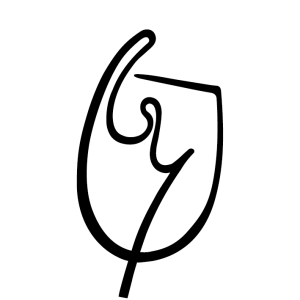
 ENG
ENG